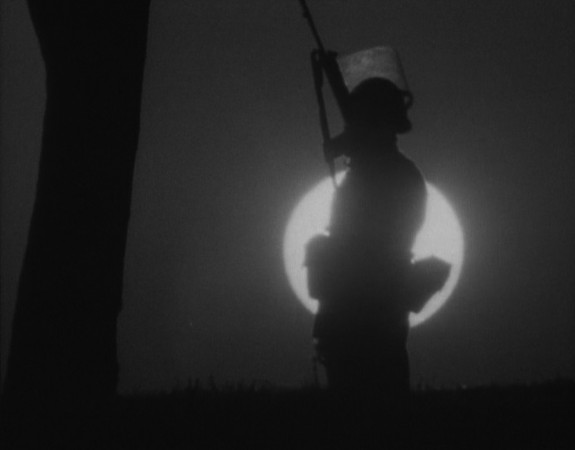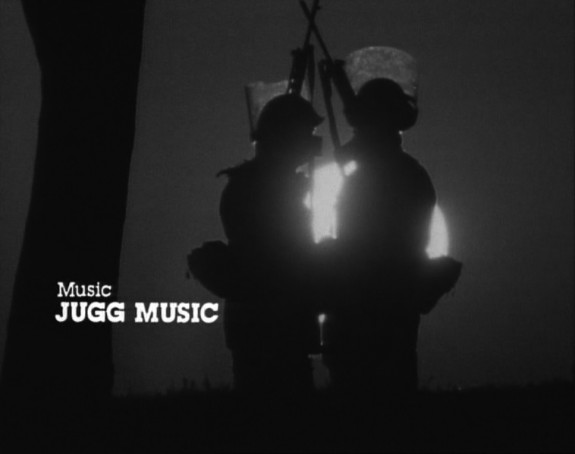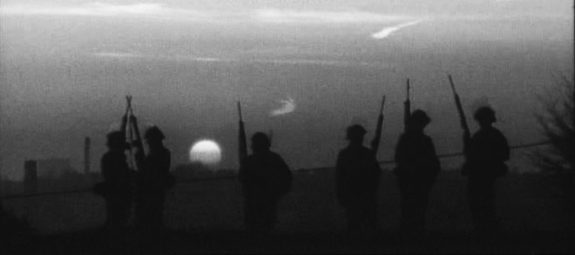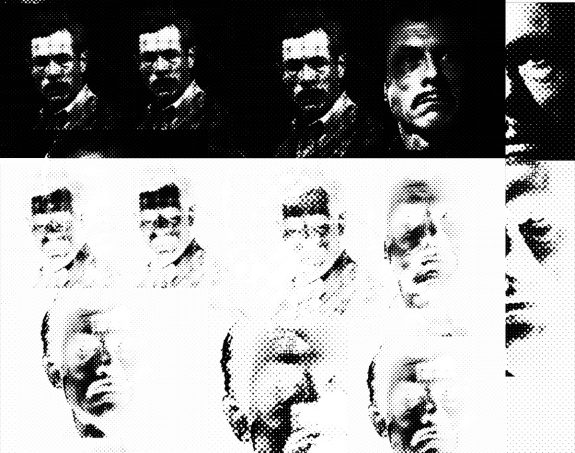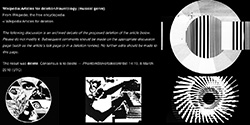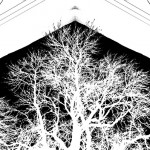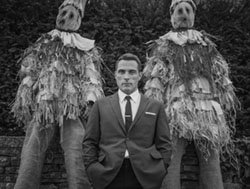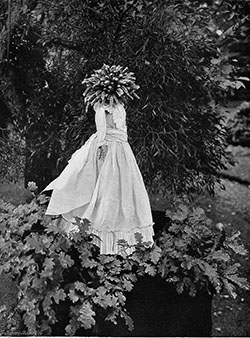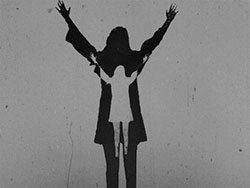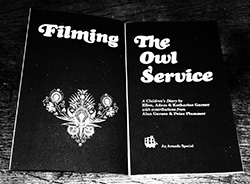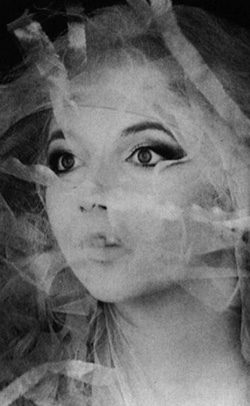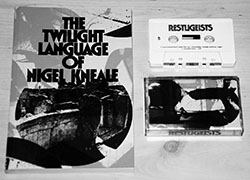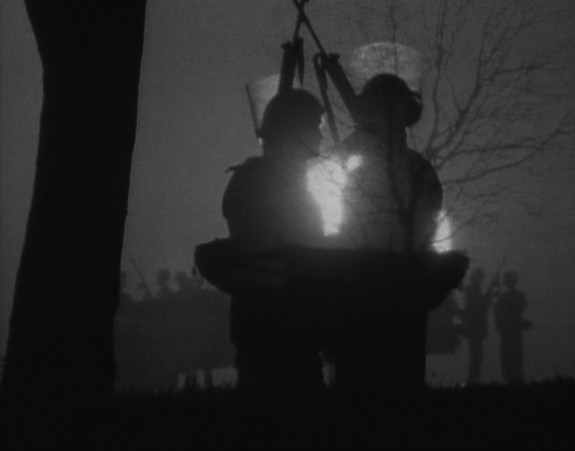
File under: Trails and Influences: Touchstones. Case #38/52.
Well, I touched upon Noah’s Castle once (or twice) before (see Day #282/365) but I feel like this/today is the core of things…
The end titles to Noah’s Castle. I’ve just rewatched them and quite frankly the old mind is swirling and twirling.
As the sun sets on a hill overlooking a classic British industrial town/cityscape, armed and riot helmeted soldiers stand watch and gather around their vehicle.
They are framed by the sunset and there is something decidedly Eden-askew about the juxtaposition of them and a bare branched tree that appears to be almost growing from their transport.
To a background of hyperinflation, food shortages, economic and social collapse these soldiers appear almost as lovers, there is an intimacy at points to how they stand and face one another… an intimacy that put me in mind of imagery from visual work Kate Bush might have created before the muse appears to have left her somewhere around the mid-1980s.
(It reminded me also of Terminator but I’m not quite sure why.)
And the words. The words. As classic 1970s/1980s turning point synthesizer based music (created by library music/soundtrack aficionados Jugg music, if you should wish to explore further) plays in the background, a news reporter intones words of the looting of food trains, the collapse of British society/economy/currency, silent protests by the nation’s youth and international resource restrictions/game playing…
And bear in mind that this is a program that was aimed at children/the young.
Now you could say that tales of economic division, social unrest, shortages and repression are currently mainstream fodder for that market via the likes of The Hunger Games…
But…
Well, that story is all flash and fantasy. Mildly diverting/enjoyable maybe but it presents a story/world that is a safe remove from the one in which its viewers live…
…while the strifes of Noah’s Castle are set today, possibly tomorrow but on recognisable streets, yours, mine, the street next door…
Which made me think of fragments of a conversation between Mr Mark Fisher and Mr Julian House (see Day #296/365):
“British TV’s problem, we agreed, is that is too in thrall to film. The classic serials of the seventies produced a world you felt a part of, a sense of inclusion to which ‘wobbly sets’ somehow contributed. The professionalism and glossiness of current TV, by contrast, locks you out, subordinates you to Spectacle. (I thought, later, of McLuhan’s distinction between film – as a hot, spectacular medium – and TV – which he said was a ‘cool’, participative medium, whose picture literally has to be ‘finished off’ by the viewer.)”
This is particularly apparent in a series like Noah’s Castle, where characters talk about the effects on them of lack of food while wandering around looking like normal well-fed day-to-day folk… but it doesn’t really matter, the story involves the viewer and leave space for the imagination…
The search for perfect, believable imagery/representations of the fantastic has led to that very same fantastic imagery becoming almost banal, no matter how spectacular (in the situationist and visual sense? – see also contemporary video games for a similar diminishing effect).
Also that quest for an ever more “real” unreality doesn’t fundamentally work – somehow or other your mind “knows” that such imagery isn’t real. There is no genuine weight (spirit?) to it, no matter how real it appears on a surface level.
(As an aside, such work also locks out folk uses of associated imagery; the designs and images presented are often massively complex and require a high level of technical expertise to reproduce them. Compare and contrast say the enemy fighter spaceships from say a late 1970s galactic space opera such as Star Wars with similar objects from most modern films; one can be drawn with literally a few pencil marks and be recognisable… the other, well, where would you start?)
There are holes all over the place in the plot and the imagery of Noah’s Castle but it doesn’t matter.
You fill in the holes (I expect this works reasonably well or otherwise drama on the radiogram/talking books would not be all that feasible).
It’s funny that. As a species/target demographic of watchers we have this thing called imagination. We can fill holes pretty much as well, if not better, than the budgets, banks of computers and the huge lists of their operators that now inhabit the credits of even what can often appear to be quite a visually unspectacular film… or we could but due to the ubiquity of that aforementioned sense of thrall, the necessary overlooking of visual non-perfection can be a little bit harder to find/introduce to viewing in these days…
..and so, back to the credits to Noah’s Castle…
The ones on the final episode have no voice over. Watching them I was longing for them to start, partly to hear what wonderfully inappropriate political events they would cover, partly because them not being there sends the mind wandering and invokes a sense that it’s all over…
